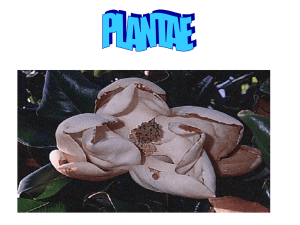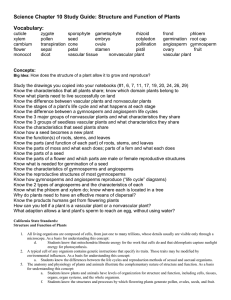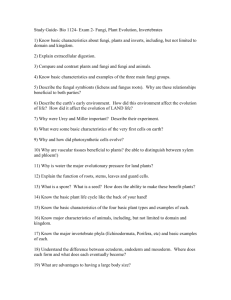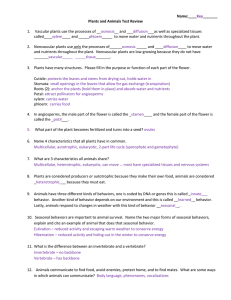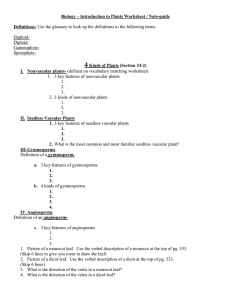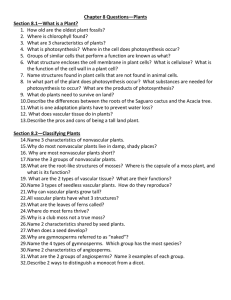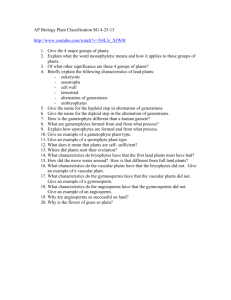Review for Practical II Read Lab Book Review Power Points
advertisement
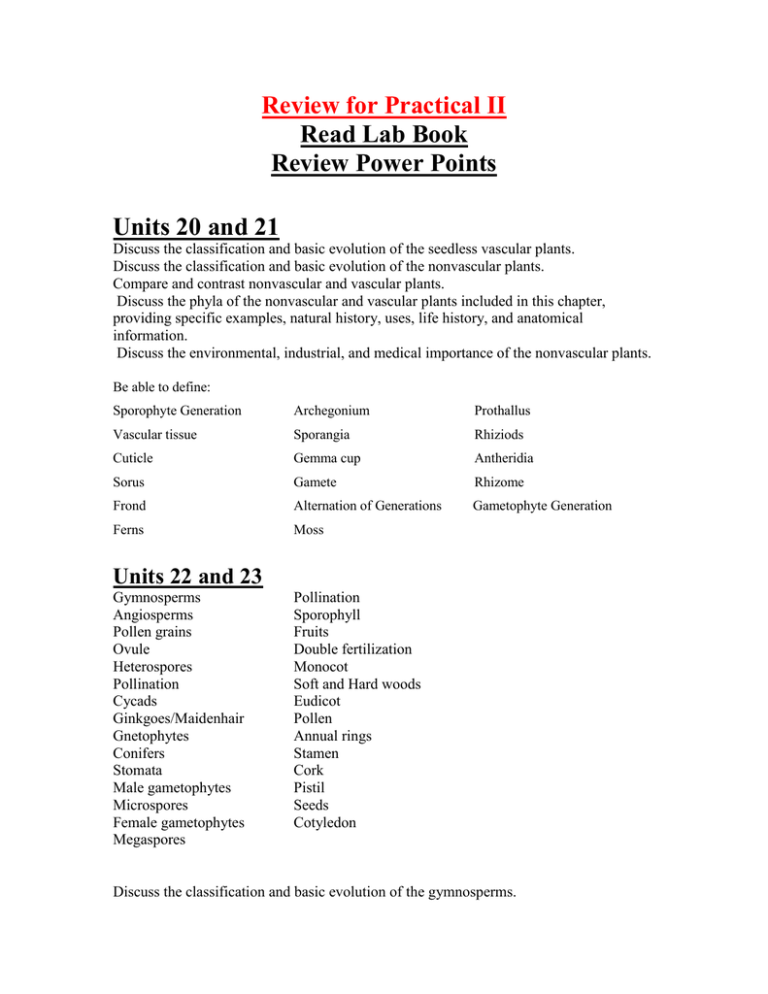
Review for Practical II Read Lab Book Review Power Points Units 20 and 21 Discuss the classification and basic evolution of the seedless vascular plants. Discuss the classification and basic evolution of the nonvascular plants. Compare and contrast nonvascular and vascular plants. Discuss the phyla of the nonvascular and vascular plants included in this chapter, providing specific examples, natural history, uses, life history, and anatomical information. Discuss the environmental, industrial, and medical importance of the nonvascular plants. Be able to define: Sporophyte Generation Archegonium Prothallus Vascular tissue Sporangia Rhiziods Cuticle Gemma cup Antheridia Sorus Gamete Rhizome Frond Alternation of Generations Gametophyte Generation Ferns Moss Units 22 and 23 Gymnosperms Angiosperms Pollen grains Ovule Heterospores Pollination Cycads Ginkgoes/Maidenhair Gnetophytes Conifers Stomata Male gametophytes Microspores Female gametophytes Megaspores Pollination Sporophyll Fruits Double fertilization Monocot Soft and Hard woods Eudicot Pollen Annual rings Stamen Cork Pistil Seeds Cotyledon Discuss the classification and basic evolution of the gymnosperms. Discuss the phyla of the gymnosperms included in this chapter, providing specific examples, natural history, uses, life history, and anatomical information. Discuss the classification and basic evolution of the angiosperms. Discuss the phyla of the angiosperms included in this chapter, providing specific examples, natural history, uses, life history, and anatomical information. Plants and Their Pollinators Structure of flower Seed structure Discuss the environmental, industrial, and medical importance of the angiosperms. Discuss the basic function of flowers, fruits, and seeds. Discuss the basic anatomy and modifications that appear in flowers, fruits, and seeds Lab 24 Root system Shoot system Stem Node Internode Terminal bud Axillary bud Petiole Monocot Eudicot/Dicot Xylem Phloem Taproot Fibrous root Herbaceous Stolon Runner Rhizomes Tubers Corm Cuticle Stoma Meristem Vascular bundle Palmately Compound Pinnately Compound Discuss the basic function of roots, stems, and leaves. Discuss the basic anatomy and modifications that appear in roots, stems, and leaves. Unit 25 Discuss the role of fungi in the environment, industry, and medicine. Discuss the classification and basic evolution of the fungi. Discuss the phyla of the fungi included in this chapter, providing specific examples, natural history, uses, and life history. Discuss the basic anatomy of fungi. Discuss the biology and anatomy of lichens. Describe the three types of lichens. Definitions/Identifications: Saprobes Hyphae Chytrids Mycelium Sporangium Zygospores Black Bread mold Ascomycota Saccharomyces Basidiomycota Mushrooms observations Aspergillus Mycorrhizae
